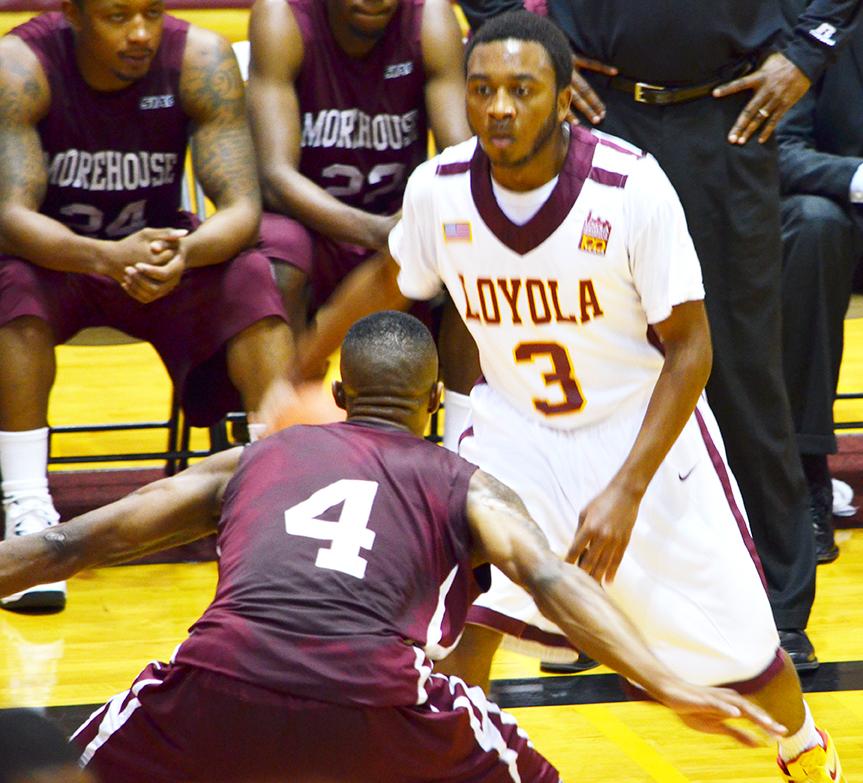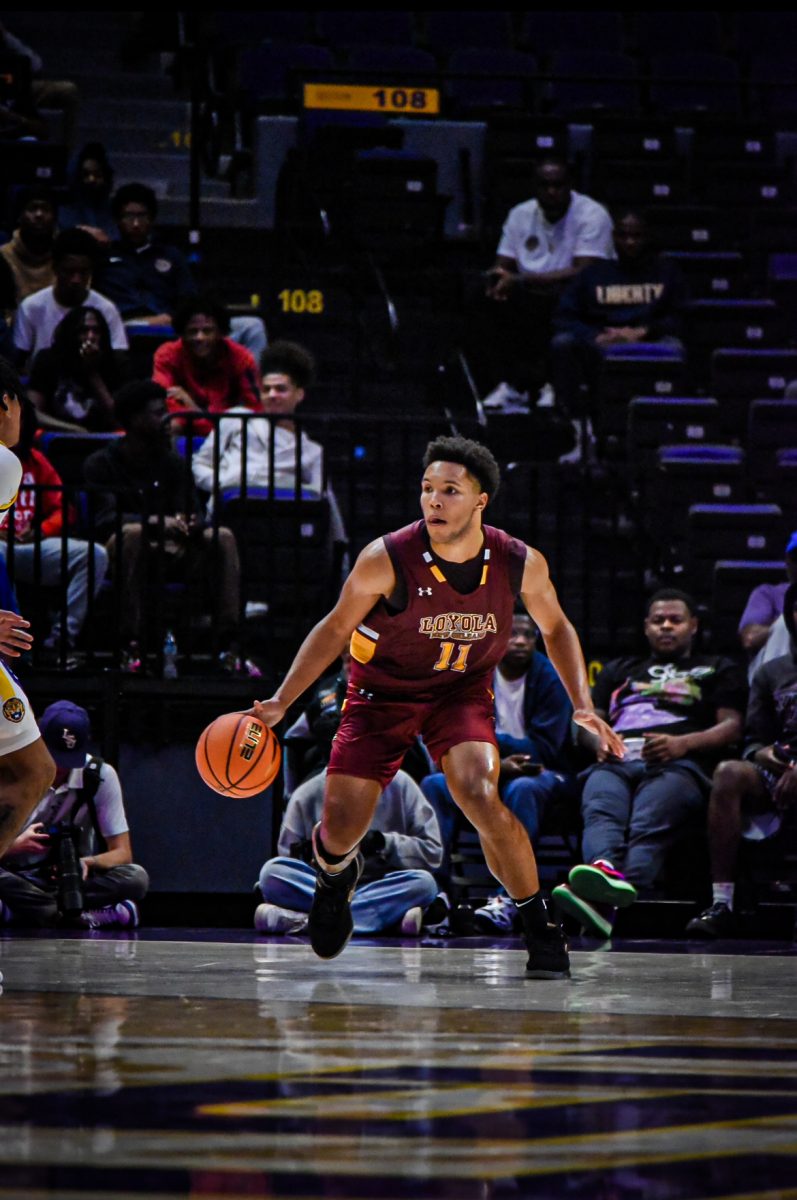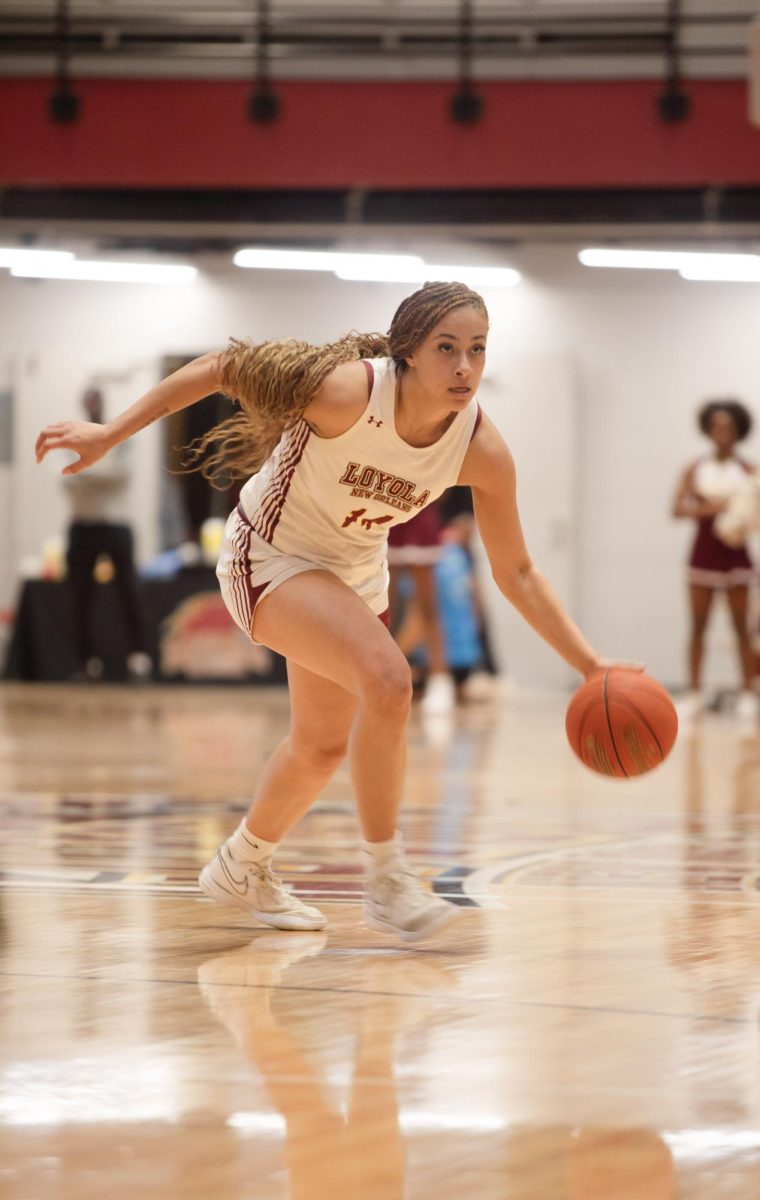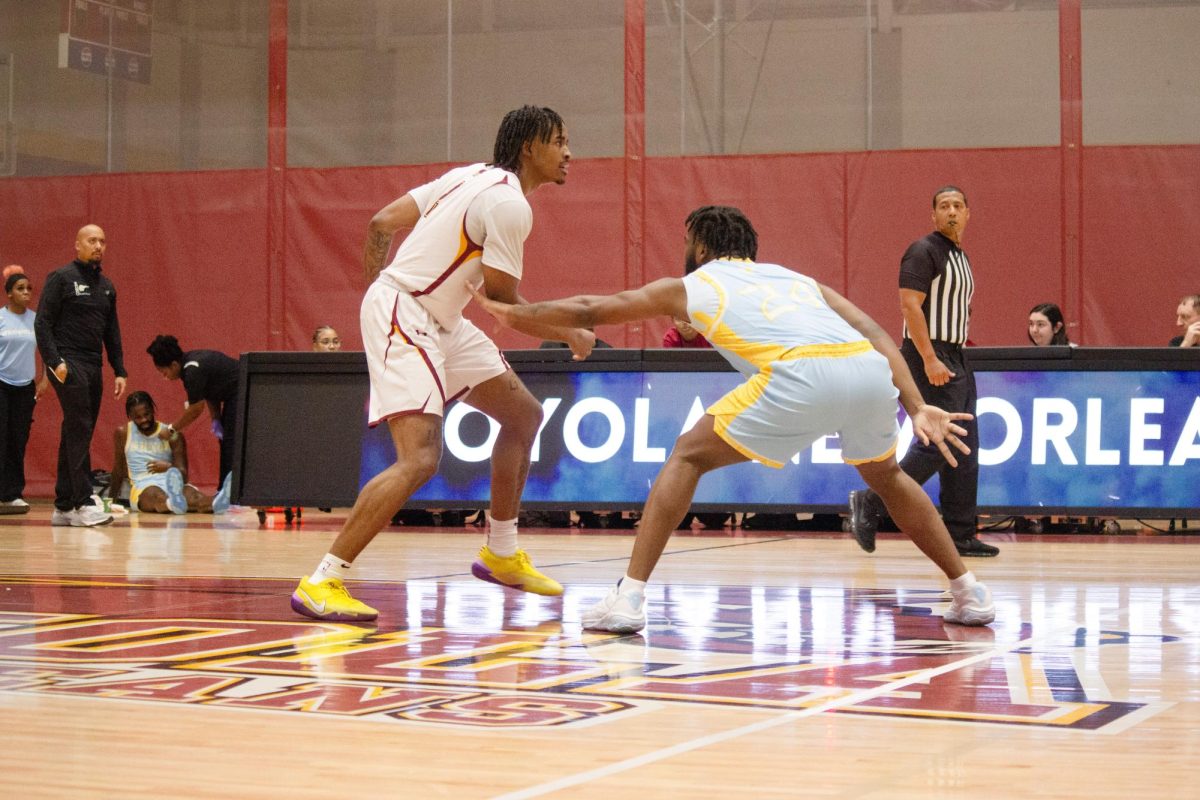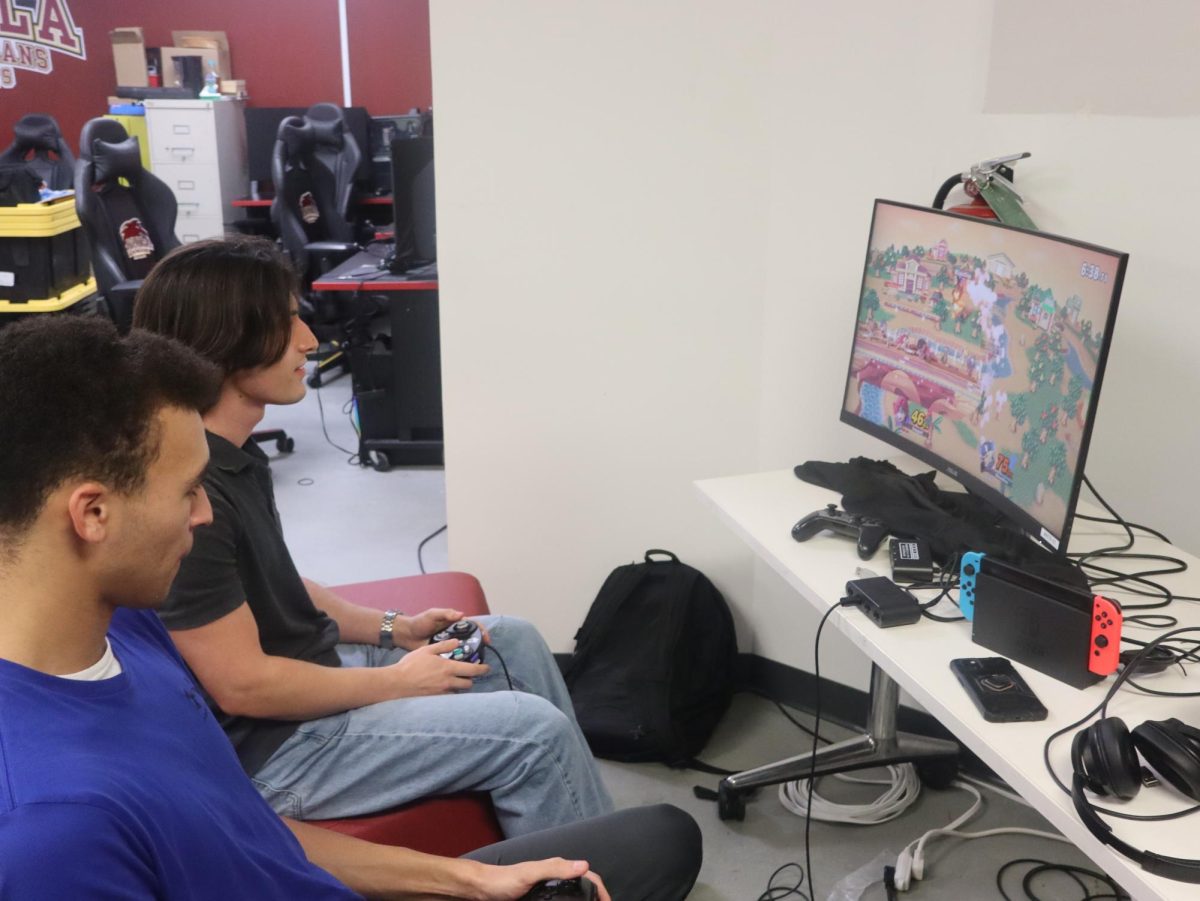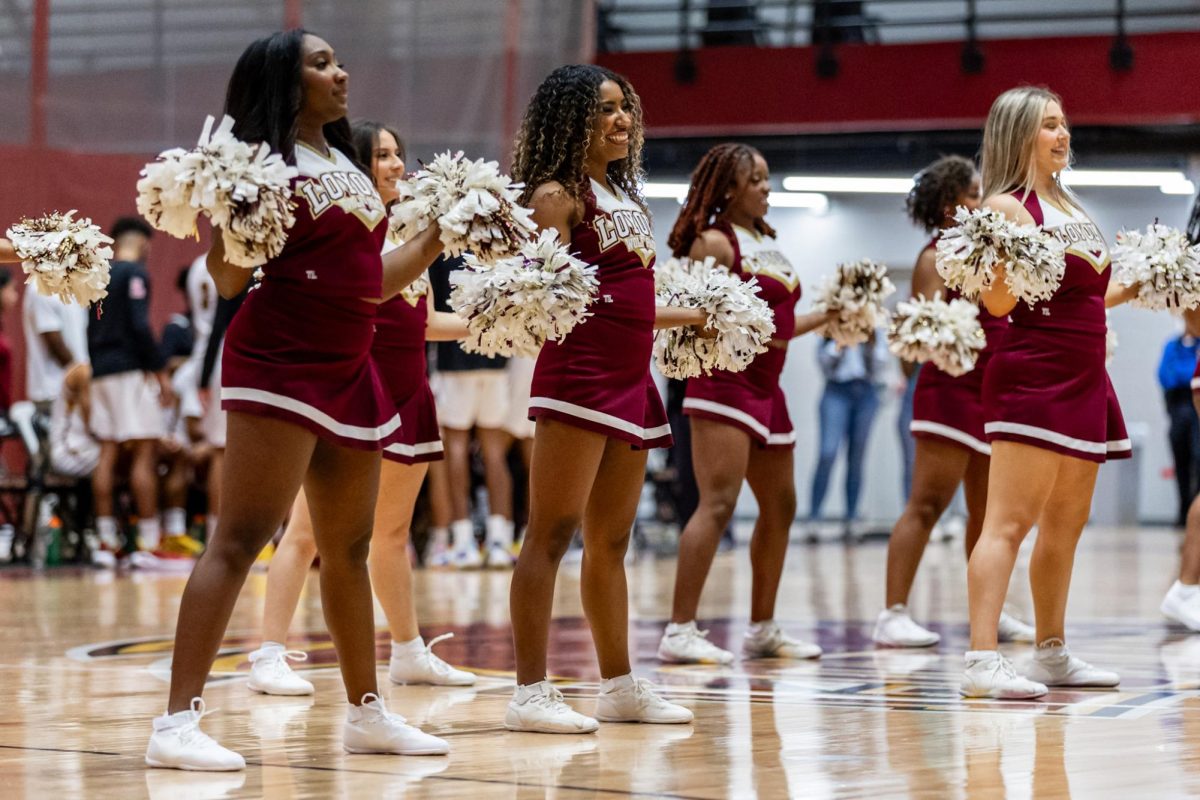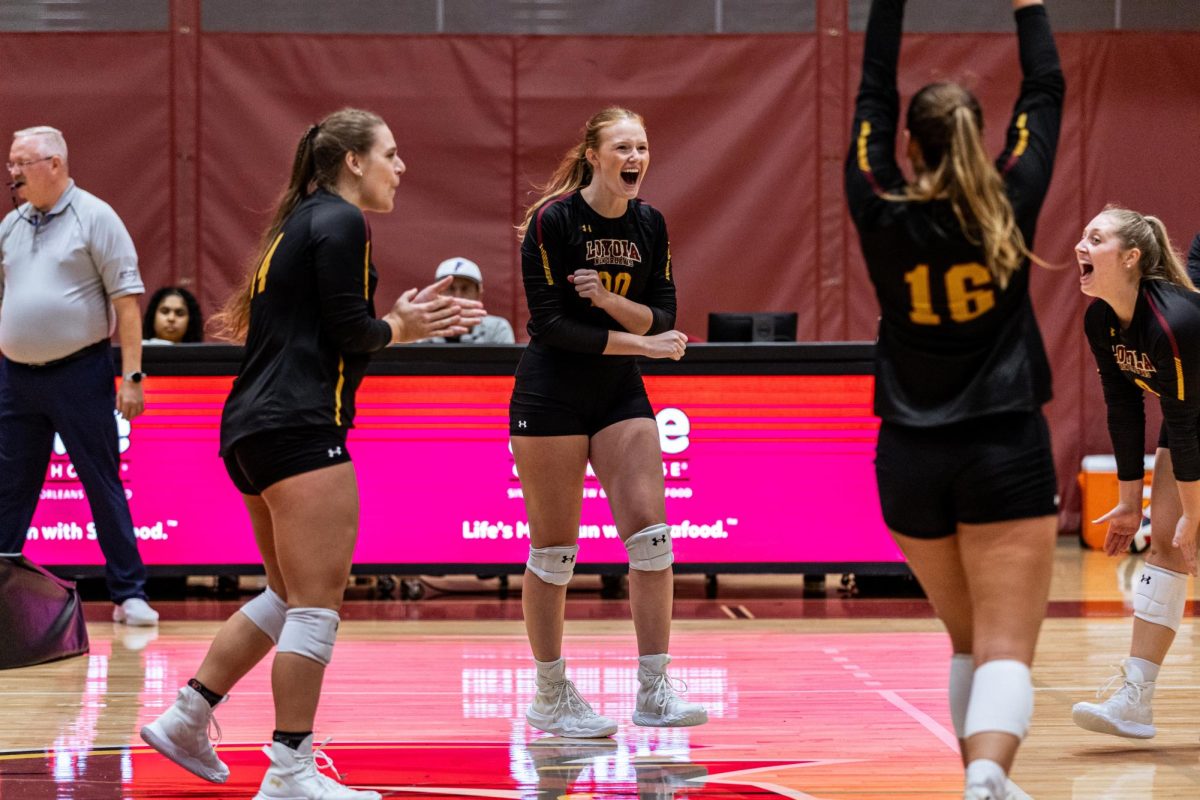The last two years, Loyola’s men’s basketball team set out two goals for the season: win 20 games and win the West division of the Southern States Athletic Conference.
In the 2011-12 season, the team accomplished both. Last year, they fell short.
There wasn’t a drastic difference between the team’s performances the last two years. Numbers indicate that had a few plays broken the other way, the team could have gotten to 20 wins again.
Why are we focusing on the past? The team only lost one graduating senior from last year. With the same players around, the team has a chance to get back to the success from the 2011-12 season.
In 2011-12, the team had an average point differential of 2.9 points per game. Last year, the same number had Loyola outscoring opponents by 2.7 points per game. We can look at the team’s performance in previous years through the lens of another more rigorous, in-depth (nerdy) number. The figure is called the Pythagorean Expectation and was first designed by Bill James to use in baseball analytics. However, its use has been expanded to different sports, and Ken Pomeroy uses his own version to analyze college basketball.
The number uses a team’s total points scored and points scored against from the previous season to judge its performance. Based on those total points, we get a winning percentage, which, when multiplied by the total games a team plays (30 in Loyola’s case), produces a number that a normal team is most likely to win in that situation.
In Loyola’s case, the 2011-12 team produces a total of 15.3 wins, when in reality it won 20. In 2012-13, the team also had a figure of 15.3 wins, and it won 16. Each year the team outperformed expectations, though it did more so in 2011-12.
Why did Loyola win four more games two years ago, then? The records in close games point to a change in fortune for the team. In 2011-12, the team was 8-3 in games decided by six points or less. Last year, the team went 4-8 in the same kind of games.
Did Loyola suddenly lose the ability to win close games? Did the players lose focus? I would argue against these points (I like to set up straw men) because of the inherent random nature of sports. Such close games can swing on one or two bounces. Sometimes it’s not about heart, focus, or desire; sometimes fortune breaks the other way.
If the team has performed at a 15-win level for the last two years, shouldn’t we fear regression to the mean? That’s certainly an issue, but the team could stand to improve. Robert Lovaglio returns as a senior and the primary offensive threat, while McCall Tomeny can continue his progress as a stretch-4 in his junior year. If these and other key players can push their games just a little more, we could be seeing this team achieving its stated goals once again.
Karl Gommel covered men’s baseketball for The Maroon last season.
He can be reached at [email protected]

KARL GOMMEL (The Maroon)


